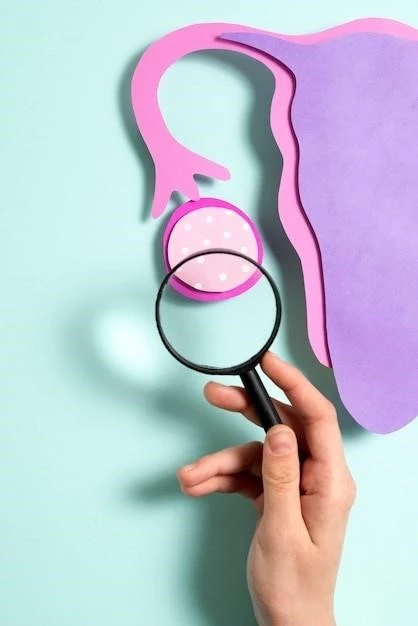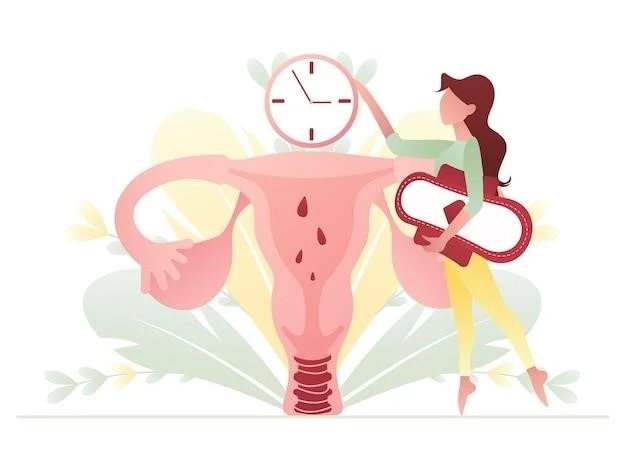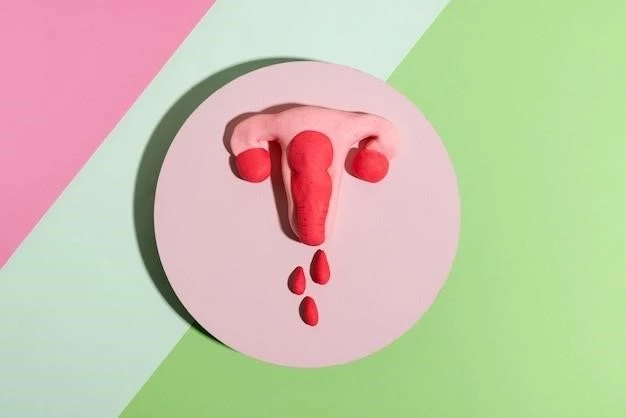Article Plan⁚ Disease ⸺ Vulvodynia
Definition and Overview
Vulvodynia is a chronic pain condition affecting the vulvar area without an identifiable cause. It is characterized by symptoms like burning, stinging, itching, and rawness in the vulvar tissue. The pain can be constant or on touch, impacting various aspects of a person’s life; The International Society for the Study of Vulvovaginal Diseases (ISSVD) defines vulvodynia as lasting at least three months and not being associated with a specific medical condition. The condition can severely affect sexual relationships and emotional well-being, leading to significant distress and disability.
Causes of vulvodynia are unclear but are believed to involve genetic, immunological, neurological, and psychosocial factors. Various subtypes exist, such as provoked vestibulodynia, generalized vulvodynia, and clitorodynia, each presenting unique challenges in diagnosis and management. Management may involve a multidisciplinary approach, including gynecologists, dermatologists, neurologists, pain management specialists, physical therapists, and mental health professionals. The impact of vulvodynia on quality of life underscores the need for research, improved diagnostics, and effective treatment options to alleviate symptoms and provide support to individuals affected by this condition.
Symptoms of Vulvodynia
Vulvodynia manifests as a range of symptoms affecting the vulvar region, with the most common being burning, stinging, itching, and rawness in the vulvar tissue. Individuals with vulvodynia may experience pain under various circumstances, such as during sexual intercourse, tampon use, or prolonged sitting. The intensity and location of pain can vary among affected individuals, impacting their daily activities and quality of life.
Moreover, some may describe sensations of aching, soreness, throbbing, or swelling in the vulvar area. The pain associated with vulvodynia can be continuous or intermittent, leading to significant discomfort and distress. Understanding and recognizing these diverse symptoms are essential for healthcare providers to make an accurate diagnosis and develop an effective treatment plan tailored to each individual’s needs.
Types of Vulvodynia
Vulvodynia encompasses various types, such as provoked vestibulodynia, generalized vulvodynia, and clitorodynia. Provoked vestibulodynia typically causes discomfort during touch or pressure, affecting the vestibule area of the vulva. Generalized vulvodynia involves pain that is spread across the entire vulvar region, while clitorodynia specifically affects the clitoris, leading to localized pain and discomfort.
These subtypes present distinct challenges in diagnosis and treatment, requiring healthcare providers to consider the specific symptoms and areas of pain experienced by individuals. Understanding the different types of vulvodynia is crucial in providing personalized care and developing targeted management strategies to address the unique needs of each affected individual.
Causes and Risk Factors
The exact cause of vulvodynia remains unknown, but it is believed to involve a complex interplay of factors including genetic predisposition, abnormalities in nerve fibers, hormonal changes, muscle spasms, inflammation, or hypersensitivity in the vulvar region. Additionally, psychological factors such as stress, anxiety, or a history of sexual abuse may contribute to the development or exacerbation of symptoms.
Several risk factors have been identified that may increase the likelihood of developing vulvodynia. These include a history of chronic yeast infections, other chronic pain conditions like fibromyalgia, pelvic floor dysfunction, autoimmune disorders, or allergies. Hormonal fluctuations, frequent antibiotic use, or a weakened immune system may also play a role in predisposing individuals to this chronic pain condition. Understanding these potential causes and risk factors is crucial in managing and addressing the symptoms of vulvodynia effectively.
Diagnosis of Vulvodynia

Diagnosing vulvodynia is often challenging due to its complex nature and the absence of visible abnormalities. Healthcare providers typically perform a thorough medical history review and physical examination, ruling out other potential causes of vulvar pain such as infections or dermatological conditions. Additionally, specialized tests like cotton swab tests or biopsies may be conducted to assess pain sensitivity and rule out other conditions.
Given that vulvodynia is a diagnosis of exclusion, healthcare professionals need to carefully evaluate symptoms and consider the duration and specific characteristics of the pain. Collaborating with gynecologists, dermatologists, pain management specialists, and other healthcare professionals can help in reaching an accurate diagnosis and developing a personalized treatment plan to address the individual’s unique needs effectively.
Treatment Options

Treatment for vulvodynia may involve a multidisciplinary approach, depending on the individual’s symptoms and subtype of the condition. Options may include medications, physical therapy, counseling, and lifestyle modifications. Topical treatments like local anesthetics, steroids, or nerve pain medications can help manage pain and discomfort. Physical therapy techniques, such as pelvic floor therapy, may aid in relaxing muscles and reducing tension in the pelvic area.
Cognitive-behavioral therapy (CBT) or counseling can assist individuals in coping with the emotional impact of chronic pain and improving overall well-being. Lifestyle changes like wearing loose cotton clothing, avoiding irritants, and practicing relaxation techniques may also be beneficial. Collaborating with healthcare providers specializing in vulvar pain can help tailor treatment plans to address the unique needs of individuals with vulvodynia.
Impact on Quality of Life
Vulvodynia significantly impacts the quality of life of individuals affected by the condition. The chronic pain and discomfort in the vulvar area can lead to physical limitations, emotional distress, and challenges in daily activities such as sitting, exercising, or engaging in sexual intercourse. The pain associated with vulvodynia can cause significant disruption to personal relationships and intimate life, leading to feelings of frustration, isolation, and decreased self-esteem.
Moreover, the constant discomfort and pain may affect mental health, contributing to conditions like anxiety and depression. Individuals with vulvodynia may experience difficulties in work, social interactions, and other aspects of life due to the persistent symptoms. Addressing the impact of vulvodynia on quality of life necessitates comprehensive care that considers both the physical and emotional well-being of those affected by this condition.
Management and Coping Strategies
Managing vulvodynia involves a comprehensive approach tailored to the individual’s specific symptoms and needs. Treatment strategies may include a combination of medications, physical therapy, psychological counseling, and lifestyle modifications. Topical medications such as local anesthetics or nerve pain medications can help alleviate pain in the vulvar area.
Physical therapy techniques, including pelvic floor therapy, aim to relax muscles and reduce tension in the pelvic region, potentially easing the discomfort associated with vulvodynia. Cognitive-behavioral therapy (CBT) or counseling can assist individuals in coping with the emotional impact of chronic pain and enhancing overall well-being. Lifestyle changes, such as wearing loose cotton clothing and avoiding irritants, may also be beneficial in managing symptoms.
Research and Recent Developments
Ongoing research on vulvodynia aims to enhance understanding of the condition and improve treatment outcomes. Recent developments include studies investigating the genetic, immunological, and neurobiological factors contributing to vulvodynia. Research efforts focus on identifying biomarkers for early diagnosis, exploring novel treatment modalities, and addressing the psychosocial impact of chronic vulvar pain.
Moreover, awareness campaigns and advocacy efforts led by organizations like the National Vulvodynia Association continue to support individuals affected by the condition and promote research initiatives. Collaborative endeavors between healthcare providers, researchers, and advocacy groups play a crucial role in advancing knowledge, fostering innovation, and enhancing the quality of care for those living with vulvodynia.
Support and Resources for Individuals with Vulvodynia
For individuals living with vulvodynia, access to support and resources is crucial in navigating the challenges associated with this chronic pain condition. Organizations like the National Vulvodynia Association provide valuable information, advocacy, and support services for women experiencing vulvar pain. These resources offer educational materials, online forums, and opportunities for connecting with others facing similar experiences.
Healthcare providers specializing in vulvar pain, including gynecologists, dermatologists, and physical therapists, can offer targeted treatment options and guidance for managing symptoms. Additionally, seeking psychological counseling or support groups can aid individuals in coping with the emotional impact of vulvodynia and enhancing their overall well-being. By accessing these support networks and professional resources, individuals can receive the assistance and understanding needed to effectively manage vulvodynia.
